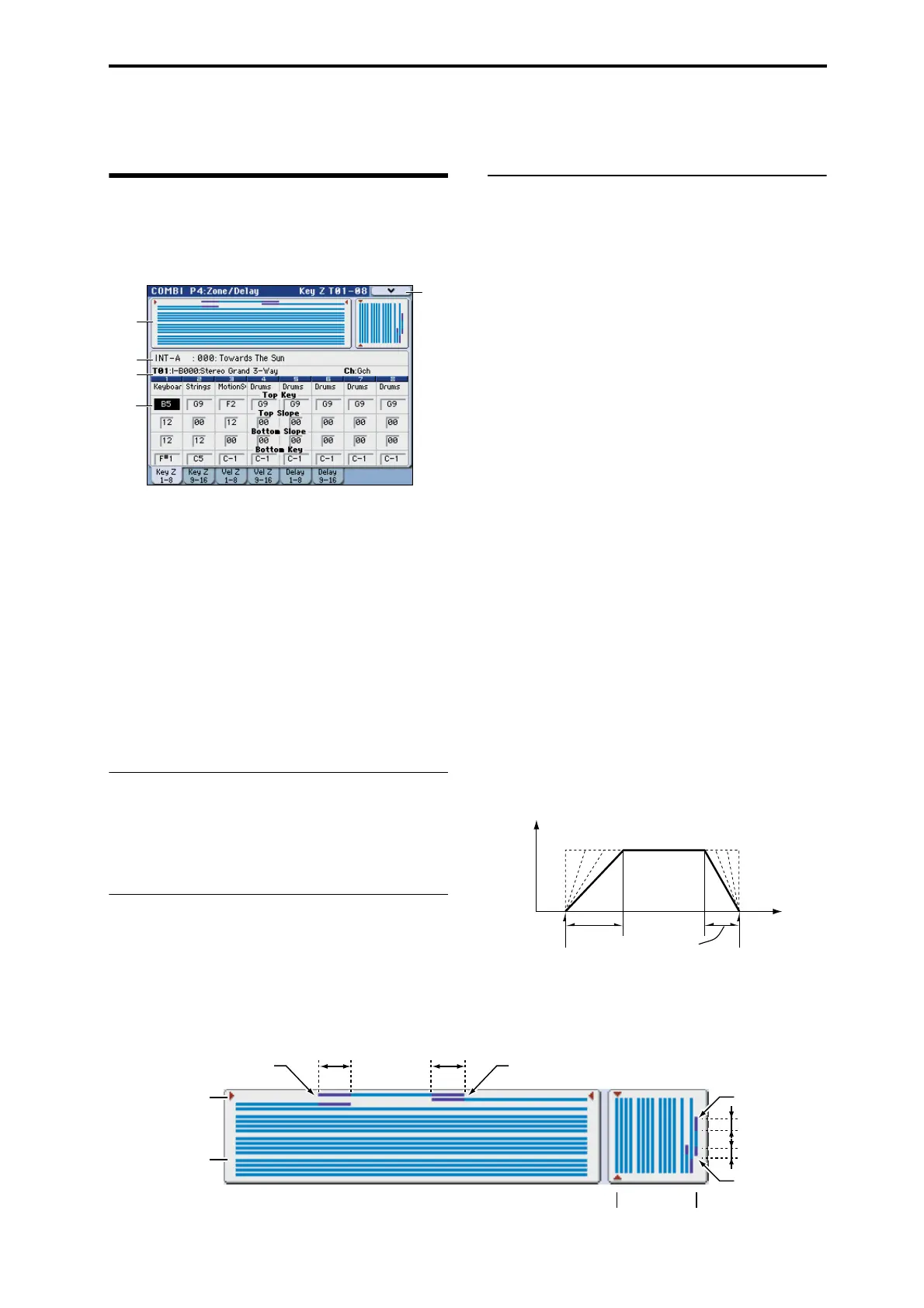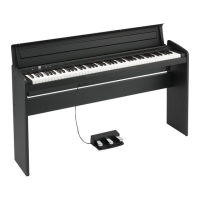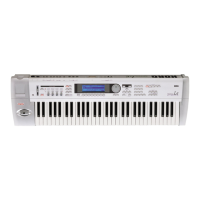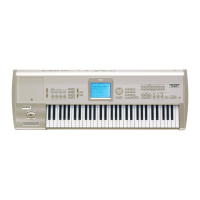COMBI P4: Zone/Delay 4–1: Key Z T01–08, 4–2: Key Z T09–16 (Keyboard Zones T01–08, T09–16)
153
COMBI P4: Zone/Delay
4–1: Key Z T01–08,
4–2: Key Z T09–16
(Keyboard Zones T01–08, T09–16)
These settings specify the keyboard range in which timbres
1–8 and 9–16 will sound.
The top/bottom key parameters specify the range of notes
in which timbres 1–8 and 9–16 will sound, and the top/
bottom slope parameters specify the range over which the
original volume will be reached.
Key Split: By setting timbres of different sounds to ranges
that do not overlap, you can play different sounds in
different ranges of the keyboard.
Layer: By setting the ranges to overlap, you can play two or
more sounds with a single note.
Positional Cross-fade: If you set the slopes (the grayed
portion) to overlap, the sounds will overlap, and the
proportion of the overlap will change according to the
keyboard location.
4–1(2)a: Zone Map
This area indicates the note and velocity ranges in which
each timbre will sound.
The display uses lines to indicate the range of notes and
velocities that will sound, and show the slope portion.
4–1(2)b:Combination Name, Tempo
4–1(2)c: Timbre Info
For more information, please see “2–1: EQ Trim T01–08, 2–2:
EQ Trim T09–16” on page 147.
4–1(2)d:Keyboard Zones
Timbre 01 (Timbre Number):
Top Key [C–1...G9]
Specifies the top key (upper limit) of the notes that will
sound each timbre.
Top Slope [00, 01, 02, 03, 04, 06, 08, 10,
12, 18, 24, 30, 36, 48, 60, 72]
Specifies the range of keys (12 is one octave) over which the
volume will be reached starting from the top key.
0: The volume will be at the original level from the top key.
12: The volume will increase gradually as you play
downward, and will reach the original volume one octave
below the top key.
72: The volume will increase gradually as you play
downward, and will reach the original volume six octaves
below the top key.
Bottom Slope [00, 01, 02, 03, 04, 06, 08, 10,
12, 18, 24, 30, 36, 48, 60, 72]
Specifies the range of keys (12 is one octave) over which the
volume will be reached starting from the bottom key.
0: The volume will be at the original level from the bottom
key.
12: The volume will increase gradually as you play upward,
and will reach the original volume one octave above the
bottom key.
72: The volume will increase gradually as you play upward,
and will reach the original volume six octaves above the
bottom key.
Bottom Key [C–1...G9]
Specifies the bottom key (lower limit) of the notes that will
sound each timbre.
4–1a
4–1c
4–1b
4–1d
4–1
Menu
Timbre 1
1 16
Timbre
Velocity zone display
Timbre 16
C–1 G9E1
Key zone display
Bottom Key
Bottom Slope Top Slope
Top
Velocity
Bottom
Velocity
Top
Slope
Bottom
Slope
Top Key
Zone Map
Bottom Key Top Key
Key
Volume
Bottom Slope
Top Slope
How volume will change according to keyboard location

